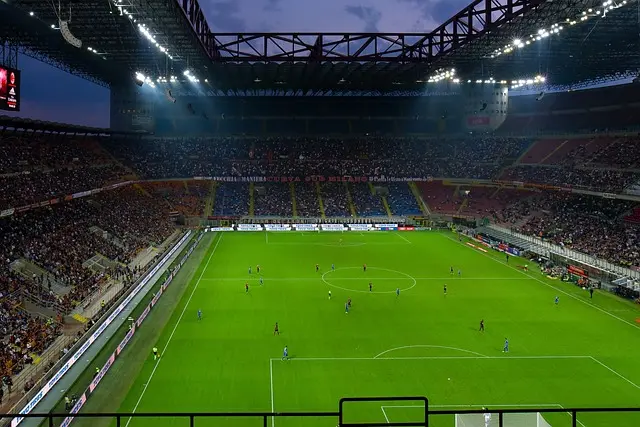
San Siro Stadium and Museum
History
The San Siro Stadium, also known as Stadio Giuseppe Meazza, was inaugurated in 1926, making it younger than AC Milan (founded in 1899) and Inter Milan (split from AC Milan in 1908). It was originally a gift from businessman and AC Milan supporter Piero Pirelli to his beloved team. Remarkably, the stadium took just 13 months to build, at a cost equivalent to only a few million dollars today—a sum now eclipsed by the transfer fees of modern football stars. Initially designed to hold 10,000 spectators, expansions over the years have increased its capacity to over 80,000, making it one of Europe’s largest football arenas.
However, decades of hosting games for two top-tier clubs have taken their toll. The stadium’s nickname, “Milan’s Big Potato Field,” humorously reflects the challenges of maintaining its pitch under constant use. While its grandeur remains undeniable, its aging structure has prompted discussions about the stadium’s future.
Guided Tours and Museum
On non-match days, the stadium transforms into a tranquil yet captivating site. Guided tours, priced at around €10–15, are a dream come true for football fans, offering access to the players’ tunnel, locker rooms, and pitchside views. Even for casual visitors, the San Siro Museum is a treasure trove of football history. It showcases memorabilia from legendary players, including jerseys, boots, and trophies. Standing before these artifacts, one can’t help but reminisce about moments like Kaká and Shevchenko lighting up the pitch in their prime.
Kaká: A Milan Legend
No visit to San Siro would be complete without a nod to Kaká, one of AC Milan’s greatest players. During his six-year spell at the club, Kaká helped Milan secure:
• 1 Serie A title
• 1 UEFA Champions League title
• 1 UEFA Super Cup
• 1 FIFA Club World Cup
• 1 Coppa Italia trophy
With 306 appearances, 104 goals, and 55 assists for the Rossoneri, Kaká also netted 25 goals and provided 13 assists in the Champions League alone. His elegant style and decisive performances earned him the Ballon d’Or in 2007, cementing his place in football history.
Why San Siro Is Worth Visiting
Whether you’re a lifelong fan of the Rossoneri or Nerazzurri or simply want to experience the spirit of Italian football, San Siro offers a glimpse into the legacy of two of Europe’s most successful clubs. Beyond its on-field history, the stadium represents the passion, artistry, and community that make football the beautiful game.
